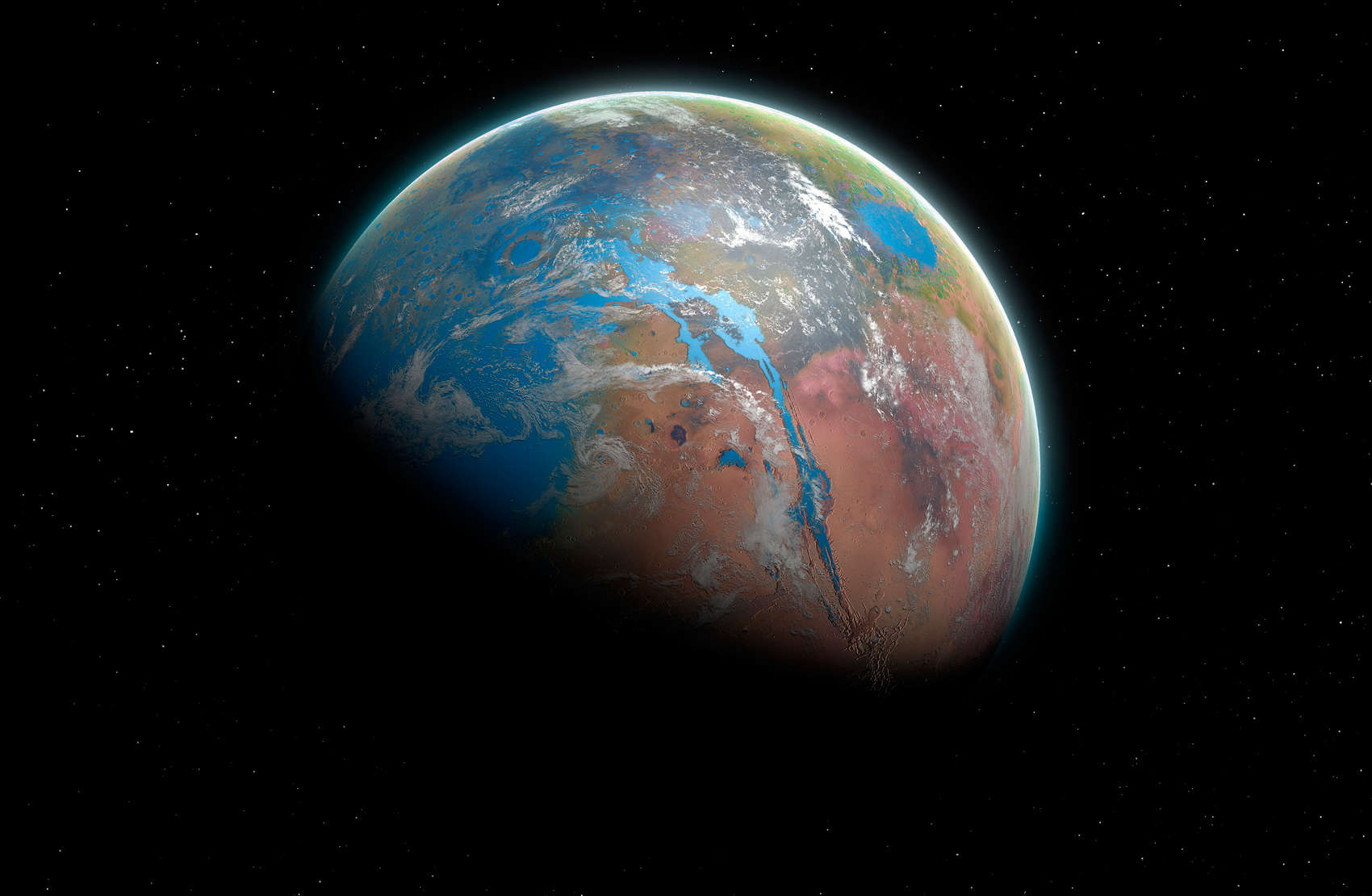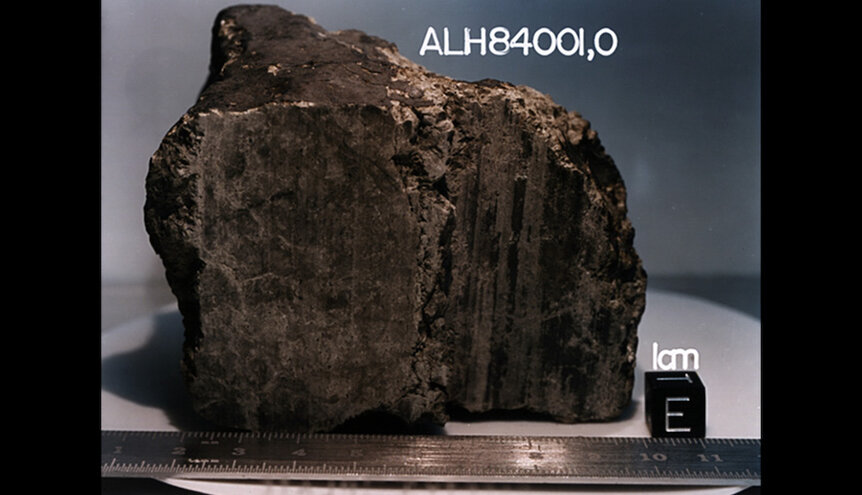Create a free profile to get unlimited access to exclusive videos, sweepstakes, and more!
The death knell of life in a Martian meteorite
Organic molecules found in a Mars rock were probably not from Martian life.

In the last days of 1984, a team of meteorite hunters spotted a dark rock in the ice of Antarctica. Fifteen centimeters long and tipping the scale at nearly 2 kilos, it’s a big space rock, and analysis of gases trapped in bubbles in the rock showed beyond doubt that it came from Mars.
It formed from cooling lava roughly 4 billion years ago, and some 400 million years later was in contact with water for a short time. Fast forward to a mere 16 million years ago. An asteroid impact slammed into Mars, flinging debris upwards at high speed. One such piece left Mars and orbited the Sun for a long time, until, 13,000 years ago, a blue-green planet got in its way. It fell on our southern continent, sitting there until someone spotted it. It was found in the Allan Hills region, and is now called Allan Hills 84001, or ALH 84001 for short.
Not long after it was the subject of a media sensation when a NASA press conference was held saying that it might — MIGHT — have evidence of Martian life in it. That’s not as ridiculous as it sounds; it’s at least theoretically possible that Martian meteorites can preserve evidence of life and transport it to Earth. One piece of evidence was that there were little fossil-like worm thingies in it, though this was the weakest link in that claim; lots of things look like worms but are not biological. Another was that the mineral magnetite was found in the rock, which resembled biologically produced magnetite on Earth. Carbon-based molecules, the kind chemists call organic, were also found. Those are the basis for life as we know it, though they can be produced geologically, or through other processes.
Over time, most of the lines of evidence in the meteorite pointing toward life were shown to be incorrect, and the speculation that it might contain Martian bacteria waned.
A new paper has come out looking at the chemistry of the rock, examining it in several different ways. The conclusion for life: Nope.
The scientists examined ALH 84001 in a part of it that included magnetite. They found evidence for short-term exposure to water, as well as organic molecules, which seems to lean toward biology. However, examining the mineral structures, they found that they were better explained through two processes called serpentenization, where water intrudes on a mineral and gets incorporated into its crystal structure, and carbonization, which happens in this case when acidic water interacts with rocks and deposits carbonates, which are simple carbon molecules.
Both of these processes are geological, not biological. The carbon dioxide in the acidic water was the source of carbon for the organic molecules, for example. On Earth carbonization is more common due to life, like, for example, when wood is burned and turns to carbon. But on Mars it’s far more likely to be abiotic, meaning not from life.
So that’s a bit of a bummer, though honestly not unexpected. The idea of life in a Martian rock was a lot of fun for a while, but science has to seek the truth, and even in the early days after the NASA presser it became clear the evidence of biology was thin.
But that doesn’t mean this isn’t a fascinating rock! For one thing it’s one of the oldest chunks of Mars we have on Earth, and it’s the oldest we’ve seen with these processes at work. Orbital surveys showed evidence of carbonization on the planet, but those tend to be in younger areas, certainly not 4 billion years old. So this shows once again that water flowed on Mars, and interestingly it was slightly acidic, at least in the spot ALH 84001 formed.
The Tissinit meteorite is a seven-kilogram chunk of Mars that fell in Morocco in 2011. It first formed as a rock only 600 million years ago, and was blasted off Mars something less than a million years ago. It too shows features of organic molecules similar to ALH 84001, even though it’s far younger, which shows that some geologic processes on Mars persisted in making organic molecules for a long, long time.
And there’s still a potential tie-in to life. On Earth, life is based on organic molecules that were created geologically (and possibly on comets and asteroids which brought them to Earth). This isn’t to say Martian life exists, or that it did in the past. But as far as we know, it can’t exist without those molecules. At least these do exist on Mars, and we have an idea now of why.
Learning more about the geology, mineralogy, and chemistry of Mars is important for many reasons, and at the top of that list I would put helping us understand our own planet better in comparison/contrast. Also, if humans ever one day get to Mars, we’ll need to know what’s going on there if we can ever hope to be able to be self-sufficient.
We’ve learned a lot by observing it through telescopes, and by sending orbiters and landers and rovers. That’s hard, and expensive, so it’s actually pretty neighborly of Mars to send us samples for free. With all this in hand, we’ll learn a lot more about this still mysterious planet.




























